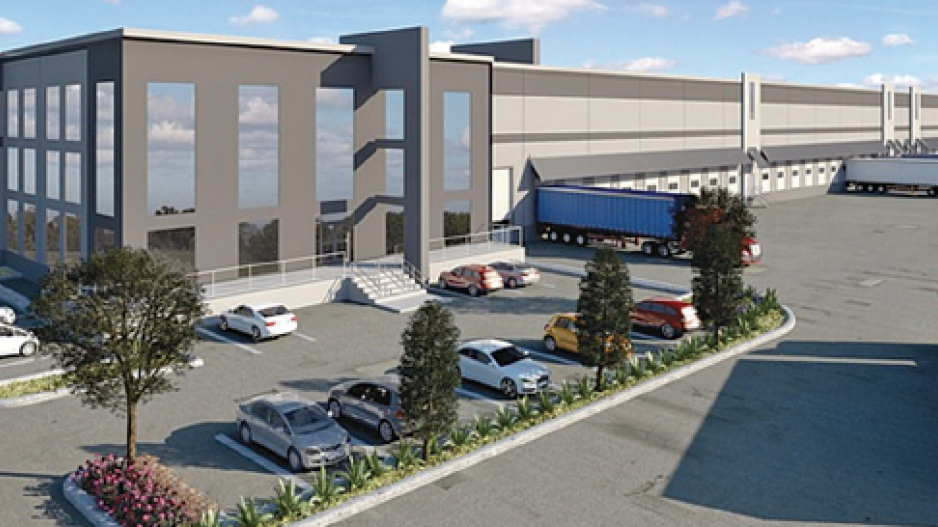Building momentum
With all the talk about transportation matters in the Lower Mainland, Dayhu Group’s latest offering in Delta underscores how controversial proposals can pay off.
A year ago, Dayhu was finishing a 440,000-square-foot warehouse overlooking Boundary Bay and making preparations for a second structure of similar size. Now, that structure – at 430,000 square feet – is under construction, three companies are vying for the entire space (including two new entrants to the market) and other groups have expressed interest in leasing a portion.
Situated adjacent to the South Fraser Perimeter Road (SFPR), which garnered significant criticism for slicing through farmland and diminishing the bucolic nature of Delta, the development is a working asset to the community.
“The appeal is definitely driven by location to the port, SFPR, Highway 99 and the U.S. border,” said Chris MacCauley of CBRE Ltd., who is handling leasing on behalf of Dayhu. “Boundary Bay is in closer proximity than any other industrial park.”
The space is also some of the newest south of the Fraser. Trumping older buildings with its 36-foot ceilings and docks every few thousand feet, it’s a flexible space that contrasts sharply with older warehouses that offer lower clearance and less room to manoeuvre.
Indeed, the division is so sharp that Delta holds the dual distinction of being the region’s most active market for industrial space and the one with the greatest volume vacant – roughly 1.5 million square feet at the end of 2014. The majority of that space is in older buildings that fall short of distribution companies’ current needs.
The situation has created opportunities for owners and managers such as Triovest to reconfigure space, while others have leapt on available land to build new.
Over in Tsawwassen, GWL Realty Advisors Inc. is building 1.2 million square feet in TFN Economic Development Corp.’s Tsawwassen Gateway Logistics Centre. The space is scheduled to be completed in 2016.
Flagging sales
While high-performance space is in demand, sales of industrial land flagged in 2014 even as the market for residential development sites rose.
“The consumer’s appetite for more housing options across the Lower Mainland will have a positive effect on the commercial real estate sector well into the foreseeable future,” said Paul Richter of RealNet Canada Inc. in a summary of regional sales activity last year.
While residential development drives sales, it has been accompanied by a shortage of industrial development sites.
Real Estate Board of Greater Vancouver figures indicate that between 2013 and 2014, industrial transactions fell 1.7%, to 473, while the aggregate value fell 12.5%, to $811 million.
But all wasn’t bleak: according to Avison Young, Vancouver was the big winner, with a record tally of $140 million in transactions despite the number of sales dropping “sharply” from 71 to 59.
The take-away message?
Good, well-located sites with flexible zoning are enjoying enhanced values, but they’re hard to come by. This in turn is driving down overall transaction volumes while the properties that are trading are older properties that command less from the market.
Driving value
The situation in Vancouver underscores the shift occurring in industrial properties.
Pure industrial uses are out, while zoning provisions that allow industrial properties to accommodate retail and other uses are in.
Avison Young analyzed data from more than 400 transactions in Vancouver and found that provisions for I-1 and I-2 zones supported increases in value of 34% and 56%, respectively, between 2007 and 2014.
“The higher pricing established by recent sale transactions in the area has essentially rendered retaining the existing structures as an inefficient use, and has transformed what would typically be considered industrial transactions into land deals,” Avison Young’s recent report on the Vancouver industrial market concludes.
Meanwhile, the value of M-1 properties – industrial uses incompatible with residential, and primarily clustered along the city’s waterfront – dropped by an average of 22.4% over the same period.•




